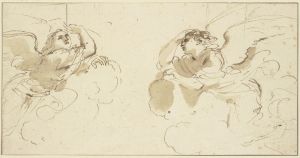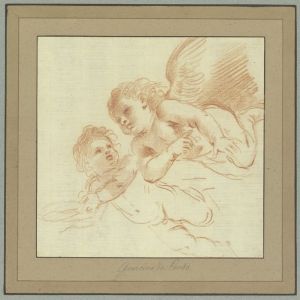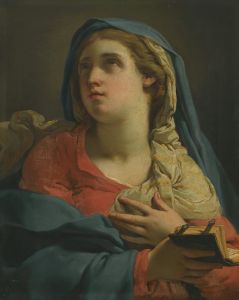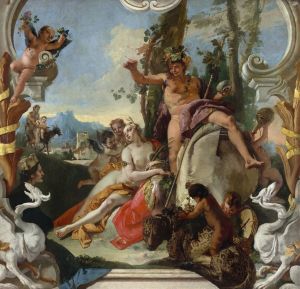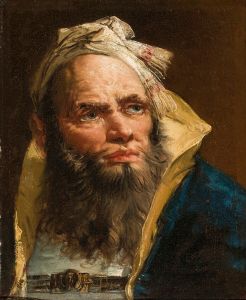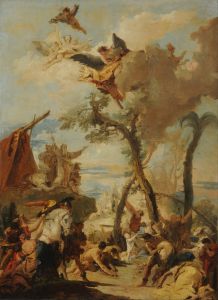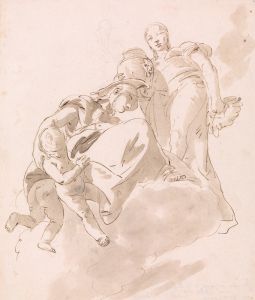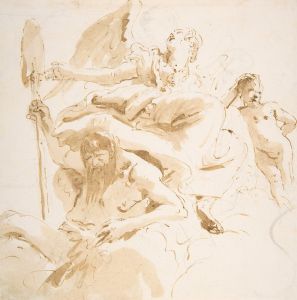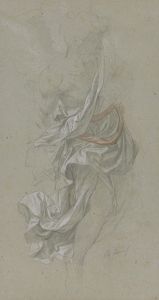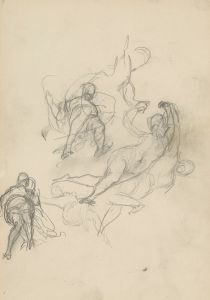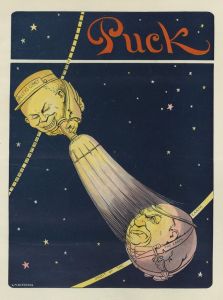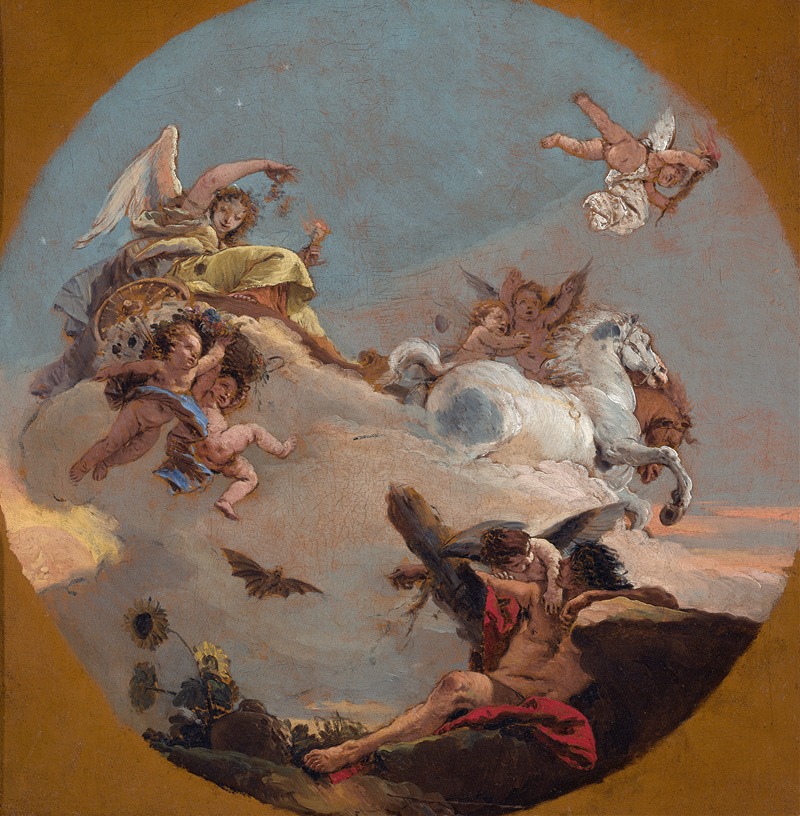
The Chariot of Aurora
A hand-painted replica of Giovanni Battista Tiepolo’s masterpiece The Chariot of Aurora, meticulously crafted by professional artists to capture the true essence of the original. Each piece is created with museum-quality canvas and rare mineral pigments, carefully painted by experienced artists with delicate brushstrokes and rich, layered colors to perfectly recreate the texture of the original artwork. Unlike machine-printed reproductions, this hand-painted version brings the painting to life, infused with the artist’s emotions and skill in every stroke. Whether for personal collection or home decoration, it instantly elevates the artistic atmosphere of any space.
Giovanni Battista Tiepolo's "The Chariot of Aurora" is a notable example of the Venetian painter's mastery in the Rococo style, characterized by its vibrant colors, dynamic compositions, and dramatic use of light. Tiepolo, who lived from 1696 to 1770, was one of the most prominent Italian painters of the 18th century, renowned for his grand frescoes and ceiling paintings that adorned palaces and churches across Europe.
"The Chariot of Aurora" is a fresco that depicts the mythological scene of Aurora, the Roman goddess of dawn, riding her chariot across the sky to announce the arrival of the sun. This theme was a popular subject in Baroque and Rococo art, symbolizing renewal and the passage of time. Tiepolo's interpretation is celebrated for its dynamic composition and the ethereal quality of its figures, which seem to float effortlessly across the ceiling.
In this work, Tiepolo employs his signature use of foreshortening and perspective to create an illusion of depth, making the figures appear as if they are soaring above the viewer. The fresco is characterized by its light, pastel color palette, which enhances the sense of morning light and airiness. Aurora is typically depicted in a flowing gown, her hair billowing behind her, as she guides her chariot, often accompanied by putti or other mythological figures.
Tiepolo's ability to convey movement and emotion through his brushwork is evident in "The Chariot of Aurora." The figures are animated and expressive, capturing the viewer's attention and drawing them into the mythological narrative. The use of chiaroscuro, or the contrast between light and dark, adds to the drama and three-dimensionality of the scene.
The fresco is part of a larger decorative scheme, often found in the ceilings of grand residences or public buildings, where Tiepolo's work was commissioned to convey themes of power, divinity, and the grandeur of the patrons who commissioned them. His ability to integrate architecture and painting is a testament to his skill and creativity, making his frescoes some of the most admired works of the Rococo period.
Tiepolo's influence extended beyond Italy, as he was invited to work in Germany and Spain, where he continued to produce large-scale frescoes that showcased his unique style and technical prowess. His work on "The Chariot of Aurora" exemplifies his ability to blend classical themes with the lightness and elegance of the Rococo, leaving a lasting impact on the art world.
Today, Tiepolo's frescoes, including "The Chariot of Aurora," are studied for their artistic innovation and their contribution to the development of Western art. They remain a testament to the artist's genius and his ability to transform mythological subjects into vivid, captivating works of art that continue to inspire and captivate audiences.





